When Shelley & Co. were about halfway done preparing Zed the Mammoth's thoracic vertebrae, they decided to open another plaster jacket: jacket #4, Zed's mandible! Their reasons were thus:
1) mammoth jaw means mammoth teeth. And mammoth teeth are excellent at revealing age. We already knew that Zed was fairly old when he died -- he's huge, for one thing, and there's evidence of arthritis on a number of his ribs, for another -- but we didn't know how old. Elephant tooth replacement occurs in very specific patterns, at very specific ages. They go through a total of 6 sets of molars in their lifetime, each molar slowly wearing down and getting pushed out by the one behind it. By comparing Zed's tooth wear to that of an African elephant, we can make a fairly accurate estimation of his age at death.
2) we have two extremely delicate mammoth tusks awaiting preparation. Working on Zed's similar-but-sturdier molars first may allow us to prepare for the tusks' preparation.
3) a very nice field producer from a very entertaining television show asked Shelley very politely to pretty please let them film the opening of the mammoth jaw jacket -- Shelley acquiesced. More on this when the time is right... [editor's note: oops, looks like I'm wrong. It was the thoracic vertebrae jacket that was opened on camera -- not the mandible jacket. Guess the field producer wasn't quite nice enough...]
Long story short: jacket number 4, containing mammoth mandible, was opened. And it looked like this:
Yuck! We were saddened to discover that a) the jaw is upside-down (no visible teeth means we must wait to learn Zed's true age!) and b) a tractor shaved off the bottom-most edges of the jaw, leaving what we in the business euphemistically call "discovery marks."
As you can see, Zed's matrix (the dirt surrounding the fossil)is primarily dusty brown clay -- not the dark, sticky asphaltic sand we find in Pit 91. This is good and bad -- good: it's easy to dig through; bad: it's dusty and dry. Dry means there's less asphalt in Zed's skeleton over-all; his bones may be a bit more fragile than many others found at Rancho La Brea. Shelley therefore decided to repair the bottom of Zed's jaw, giving it a solid base to rest on and preventing further damage. After the bottom half was cleaned and ready to flip, the jaw was built up with gray putty:
And a wooden base was constructed around it:
That pink stuff is cellophane. That wooden box is about to be filled with expanding foam, which will create a perfectly customized cradle for the jaw to rest it. The cellophane -- in addition to being quite fetching -- will keep the foam from sticking to bone.
Trevor assisting on the left, Shelley pouring on the right. The foam is created by mixing two separate fluids together, and waiting:
Look! It's Herb, waiting patiently! Herb is awesome; he volunteers here, and at the LA Zoo, and with the Dinosaur Institute at the LA Natural History Museum. He's basically enmeshed with every natural history organization in the greater Los Angeles area. I think he's trying to take over.
Anyway: the foam! It rises, like bread, but far less tasty:
Trevor shaved the few errant remnants, and then:
Yay! It's done! What a beautiful mandible base! The jaw itself was then very carefully turned, and placed into the base. Trevor removed another layer of plaster, and soon enough, Zed's molars finally revealed themselves.
Zed's on his last set of molars -- a pair of M3's. Mammoth teeth are similar to elephants in that they're made up of a series of undulating plates. These teeth erupt one after another, almost continuously throughout their lifetimes, and plates are worn down from front to back. Based on the amount of wear on Zed's teeth, Shelley estimates Zed's age at 47 years (+/- 2). Zed wasn't ancient, but he definitely would have qualified for AARP membership.
If mammoths lived as long as African elephants live now -- up to 60 years -- then Zed could have had another decade in him, had an asphalt seep not caused his tragic end. However, Zed's jaw contains a rather unexpected hint at what kind of life Zed would have lived. Look at the front of the jaw, between his molars, where his tongue would have rested:
That weird, drippy growth is pathological -- that is, it's not normal. While mammoths typically do have a kind of "spout" in that area -- sometimes it angles down, sometimes it points straight out -- they don't have the weird, bumpy, lopsided growth that Zed shows here. But here's the thing -- yeah, we know that growth is pathological. But just because it's weird doesn't mean it's necessarily uncommon. We have far fewer mammoths in our collection than we spoiled Rancho La Breans are used to dealing with -- 30-32, compared to thousands of dire wolves. And we have even fewer pieces of mammoth jaw. There are approximately five mammoth mandibles in our collection in which that particular feature (the mandibular symphysis) is more or less intact -- and certainly none anywhere as complete as Zed's. So it's hard to say if this growth is unusual or not. Who knows -- many mammoth mouths could have been lopsided and bumpy like Zed's. We won't know until we find more mammoths. All the more reason to keep digging.
But here's the other thing: several of Zed's other bones have pathological elements to them -- arthritic joints, broken and re-healed ribs. It's looking more and more as if Zed lived a pretty rough life. In fact, the latest jacket Shelley and Trevor opened -- just last week! -- contains another hint at Zed's life. But more on that next week. Or rather, next year. Whatever -- Happy new year!
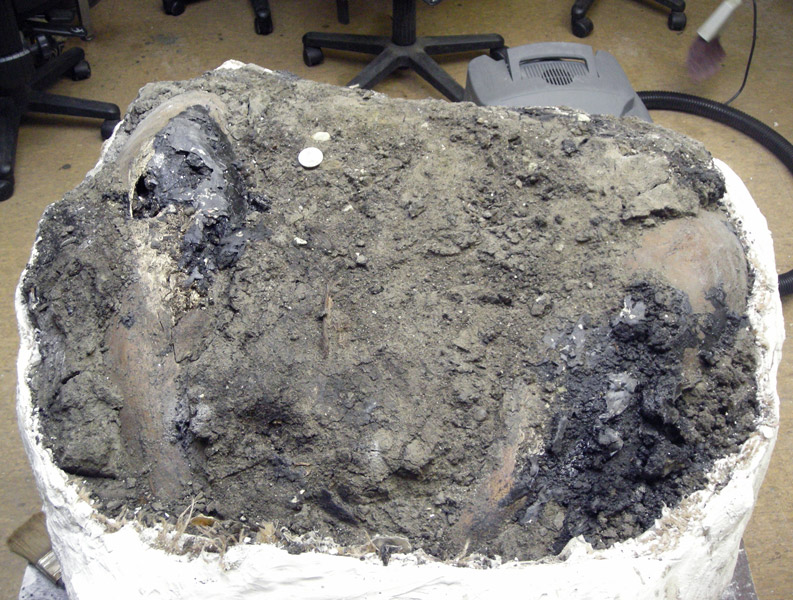


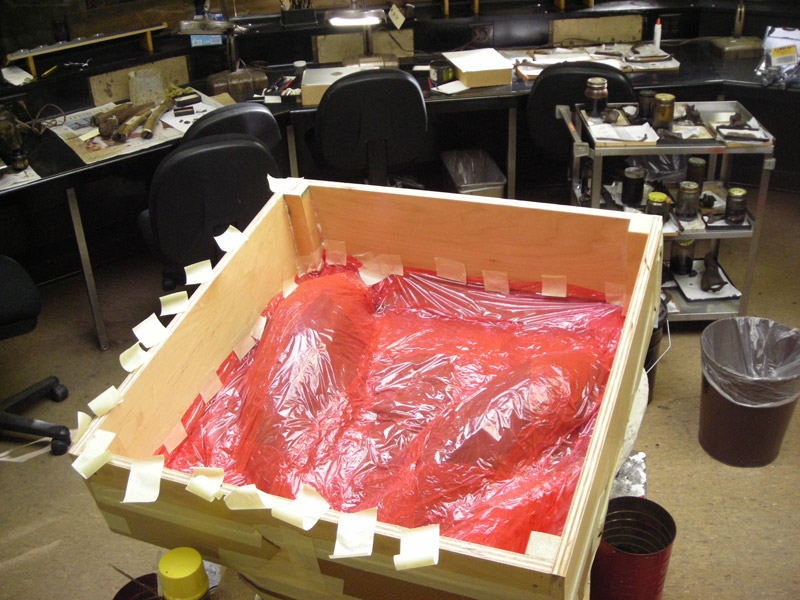

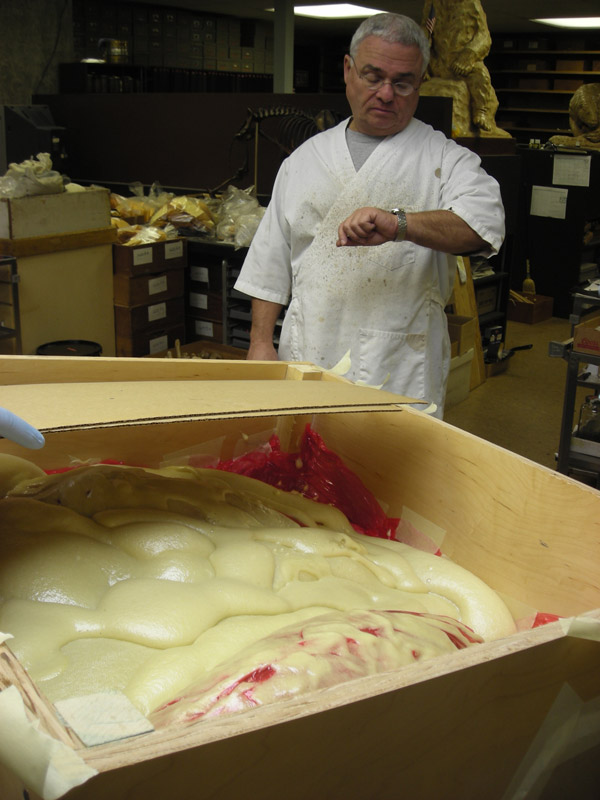

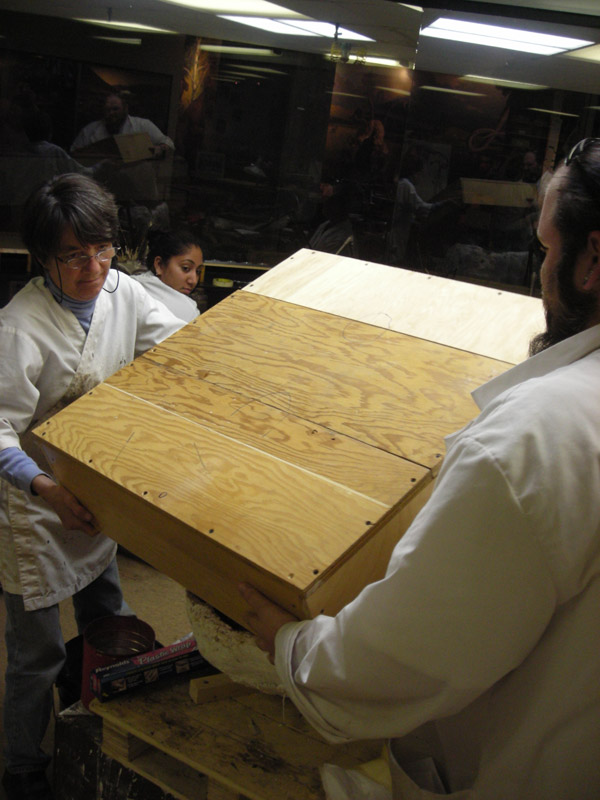
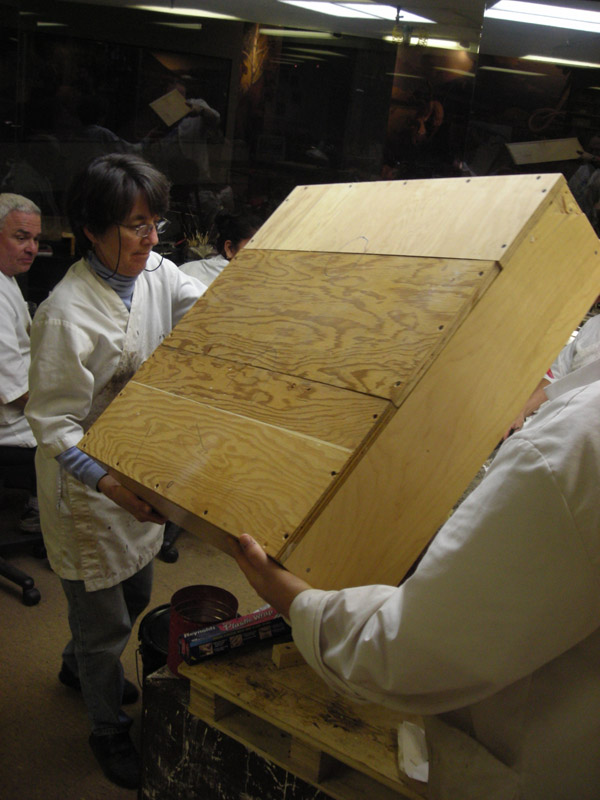
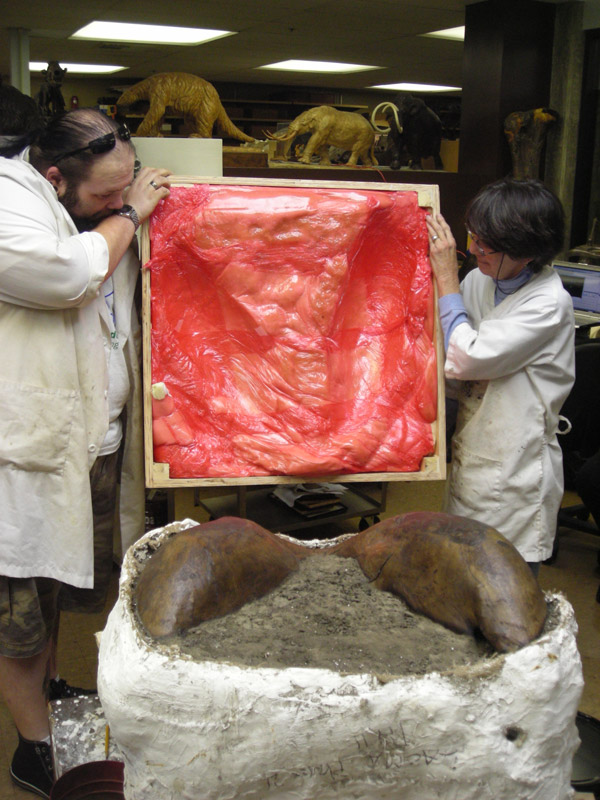


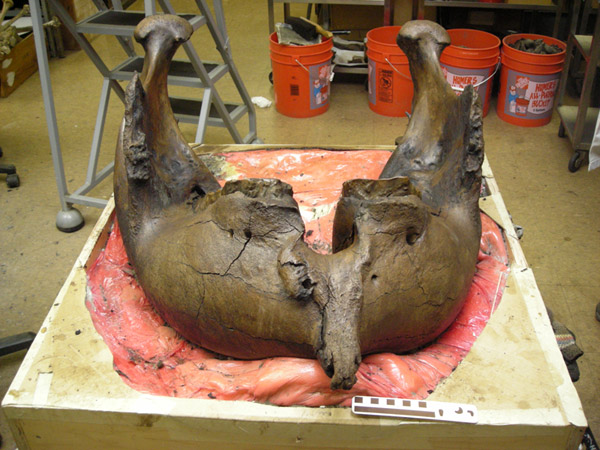



3 comments:
Happy New Year! I'm enthralled at what a whole new year will bring us at the Page! :)
awesome story. I was on the edge of my seat, really! I just wish Herb had had a larger part.
Now, I heard that the Columbian Mammoth was more closely related to the Asian elephant than the African elephant. So I'm wondering if there is any difference in the ontogeny of tooth eruption or the average lifespan between these two extant species. If so, that would have pretty significant implications for how we judge extinct proboscidean age and lifeways.
Perhaps the Lone Male Excavator will have to do a little lit review and post a note on this.
Great blogging here, by the way; much to read, but all terribly exciting!
Post a Comment